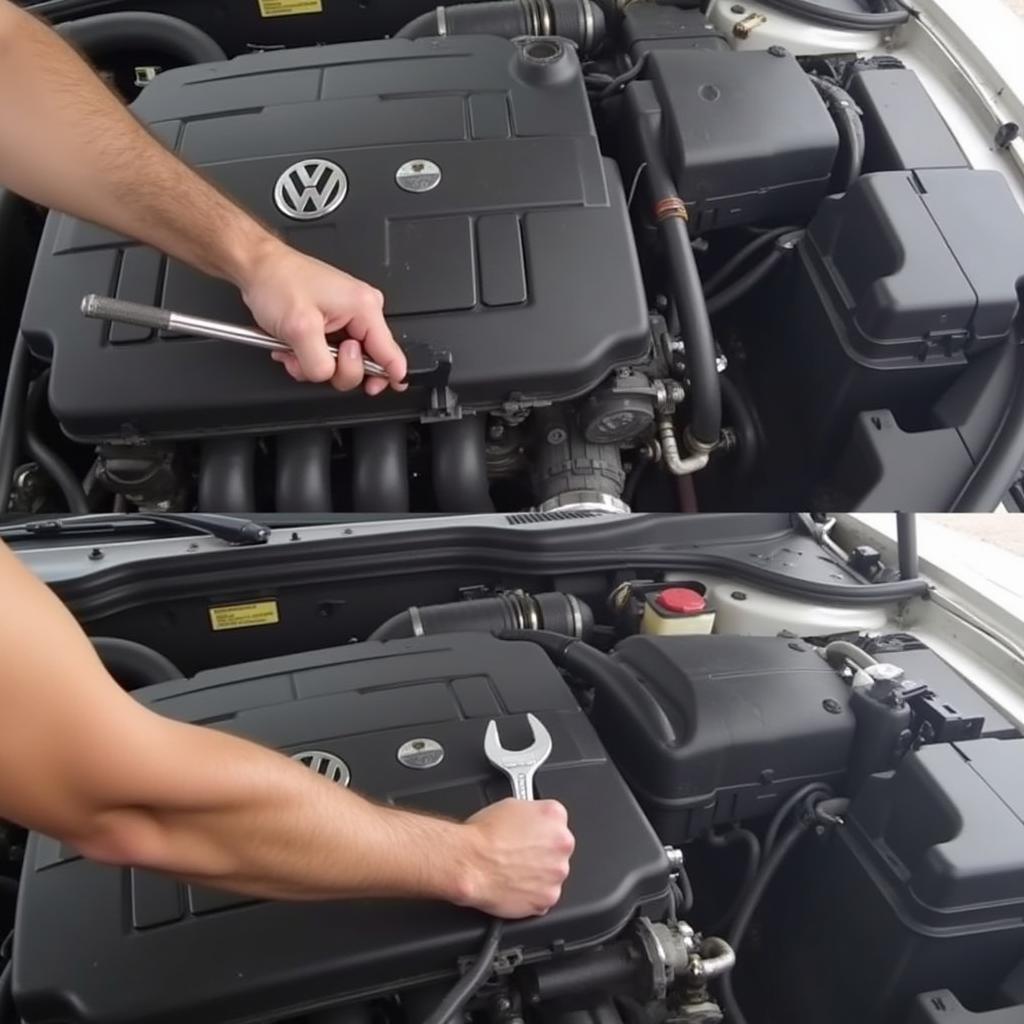Your cart is currently empty!

Understanding and Fixing the P0030 Code on Your VW CC
The dreaded P0030 code on your Volkswagen CC can be a frustrating experience. This article dives deep into understanding this specific trouble code, its causes, symptoms, diagnostic procedures, and solutions, providing you with a comprehensive guide to tackle the P0030 code like a pro. We’ll cover everything from simple checks to more complex repairs, empowering you to get your VW CC back on the road.
What Does the P0030 Code Mean on a VW CC?
The P0030 code specifically points to a malfunction within the heated oxygen sensor (HO2S) control circuit for bank 1, sensor 1. This sensor plays a crucial role in monitoring the exhaust gases and providing feedback to the engine control module (ECM) for optimal air/fuel mixture and emissions control. Bank 1 refers to the side of the engine containing cylinder 1, and sensor 1 is the upstream oxygen sensor, located before the catalytic converter.
Symptoms of a P0030 Code in a VW CC
Ignoring a P0030 code can lead to further complications. Recognizing the symptoms early can save you time and money. Common symptoms include:
- Check Engine Light: The most obvious symptom, indicating a problem with the engine management system.
- Reduced Fuel Economy: A malfunctioning oxygen sensor can cause the engine to run rich, wasting fuel.
- Rough Idle: The engine might stumble or vibrate at idle due to incorrect air/fuel mixture.
- Failed Emissions Test: A faulty HO2S will likely cause your vehicle to fail emissions testing.
- Hesitation or Stalling: In some cases, the engine might hesitate during acceleration or even stall.
 VW CC Dashboard Showing Check Engine Light for P0030 Code
VW CC Dashboard Showing Check Engine Light for P0030 Code
Common Causes of the P0030 Code
Several factors can contribute to a P0030 code. Understanding these causes can help pinpoint the problem more effectively.
- Faulty HO2S: The most common culprit is a damaged or worn-out oxygen sensor.
- Wiring Issues: Damaged, corroded, or loose wiring in the sensor circuit can disrupt the signal.
- Blown Fuse: A blown fuse in the HO2S circuit can cut off power to the sensor.
- Exhaust Leaks: Leaks in the exhaust system before the sensor can introduce outside air, affecting readings.
- Vacuum Leaks: Unmetered air entering the engine can disrupt the air/fuel mixture.
- Faulty ECM: While less common, a malfunctioning ECM can also trigger this code.
Diagnosing the P0030 Code in Your VW CC
Proper diagnosis is key to fixing the P0030 code. Here’s a step-by-step guide:
- Retrieve the Code: Use an OBD-II scanner to confirm the P0030 code.
- Visual Inspection: Check the wiring and connector for the HO2S for any visible damage.
- Check the Fuse: Locate and inspect the fuse related to the HO2S circuit.
- Test the Wiring: Use a multimeter to check for continuity and voltage in the sensor circuit.
- Test the HO2S: Use a multimeter or a dedicated oxygen sensor tester to check the sensor’s output.
- Check for Exhaust Leaks: Inspect the exhaust system for any leaks, particularly before the sensor.
 Using an OBD2 Scanner to Diagnose P0030 Code on a VW CC
Using an OBD2 Scanner to Diagnose P0030 Code on a VW CC
“Regularly checking your oxygen sensors can prevent many issues down the road,” advises John Miller, a seasoned automotive electrical engineer with over 20 years of experience. “A simple check can save you from costly repairs later.”
Fixing the P0030 Code
Once you’ve identified the cause, the next step is to fix the problem. Here are some common solutions:
- Replace the HO2S: If the sensor is faulty, replacement is the most effective solution.
- Repair Wiring: Repair or replace any damaged or corroded wires in the sensor circuit.
- Replace the Fuse: Replace a blown fuse with the correct amperage rating.
- Repair Exhaust Leaks: Seal any leaks in the exhaust system.
- Address Vacuum Leaks: Locate and repair any vacuum leaks.
- Consult a Professional: If the problem persists or you’re unsure about any step, consult a qualified mechanic.
 Replacing the Oxygen Sensor on a VW CC
Replacing the Oxygen Sensor on a VW CC
“Don’t underestimate the importance of using the correct oxygen sensor for your VW CC,” adds Sarah Chen, an automotive diagnostics expert. “Using the wrong sensor can lead to inaccurate readings and further problems.”
Conclusion
The P0030 code on your VW CC might seem daunting, but with the right knowledge and approach, it’s manageable. By understanding the code, its symptoms, causes, and diagnostic procedures, you can effectively address the issue and keep your car running smoothly. Don’t hesitate to contact us at VCDSTool for further assistance. Our phone number is +1 (641) 206-8880 and our email address: vcdstool@gmail.com and our office is located at 6719 W 70th Ave, Arvada, CO 80003, USA.
 VW CC Engine Running Smoothly After Fixing P0030 Code
VW CC Engine Running Smoothly After Fixing P0030 Code
“Remember, a well-maintained car is a happy car!” reminds John Miller. Regular maintenance and prompt attention to trouble codes like the P0030 can extend the life of your vehicle and prevent costly repairs in the future.
by
Tags:
Leave a Reply